Hasegawa 1/48 A6M3 Model 32 “Houkoku”
HISTORY
The A6M2 Model 21 Zero revealed it was slightly underpowered when it entered combat in 1941. Mitsubishi answered this problem with the A6M3, powered by an uprated Sakae 21 engine, which used a two-speed supercharger for better altitude performance, and increased power to 1,130 hp. A prototype with the new engine was first flown on July 15, 1941. The new engine was slightly heavier and somewhat longer due to the larger supercharger, which moved the center of gravity too far forward on the existing airframe. To correct for this, the engine mountings were cut back by 7.3 inches, which reduced the size of the main fuselage fuel tank located between the engine and the cockpit from 137 gallons to 120 US gallons. The cowling was redesigned to enlarge the cowl flaps, revise the oil cooler air intake, and move the carburetor air intake above the engine in the upper part of the cowling.
The Model 32 featured a redesigned wing with the folding tips removed, which squared off the wingtips. The inboard edge of the aileron was moved outboard by one rib, and the wing fuel tanks were enlarged to 110 gallons. The 20 mm cannons were upgraded from the Type 99 Mark l to the Type 99 Mark II, while ammuntion capacity was increased to 100 rpg.
The changes increased maximum speed by only 6.8 mph compared to the Model 21, but reduced maximum range by approximately 620 miles. The shorter wing span led to better roll, while reduced drag allowed diving speed to be increased to 420 mph. Maneuverability suffered due to smaller ailerons and decreased lift, while range suffered due to greater fuel consumption. Nevertheless, the navy accepted the new type and it entered production in April 1942. Mitsubishi produced only 343 before it was replaced by the A6M3 Model 22, which restored the Model 21 wing and the maneuverability and nearly the range of the A6M2.
The reduced range proved a significant limitation during the Solomons Campaign, where Zeros based at Rabaul had to fly nearly to their maximum range to reach Guadalcanal and return. Thus, the Model 32 initially entered combat over New Guinea, where it replaced the Model 21s of the Tainan Air Group based at Lae and Salamaua. The lack of range spurred the Japanese to construct airfields on Bougainville, and later on New Georgia, in the northernmost and central parts of the Solomons chain repectively, which allowed the Model 32 to be widely used during the Central Solomons campaign that commenced in 1943 after the U.S. took control of Guadalcanal. The new type equipped the carrier air groups of the ships at Truk, which were pressed into service at Rabaul and it saw extensive combat during the Rabaul campaign between September 1943 and February 1944.
The initial appearance of the redesigned A6M3 Model 32, which was initially thought to be a completely new type, prompted the USAAF to assign it a new code name, "Hap". The name was short-lived, as a protest from USAAF Commanding General Henry "Hap" Arnold forced a change to "Hamp". Soon after, it was realized it was simply a new model of the "Zeke" and was termed "Zeke 32".
THE KIT
Hasegawa has basically “owned” the Zero series since they first released an A6M5a that was the last Mania kit before that company was acquired by Hasegawa in 1979 and its designers transformed Hasegawa kits. The A6M3 was one of the “mid-range” Zero kits released in the early 1990s, which included the Model 22 and an improved A6M5a, which all improved the original Mania kit with engraved panel lines and a cockpit with more detail.
The “Houkoku” kit was a limted release in 1997 with decals for air groups from the Mobile Fleet that fought at Rabaul.
CONSTRUCTION
The Hasegawa Zero series benefit from excellent kit design, which provides improved fit in comparison with other kits released at this period before CAD design transformed things. If a modeler is careful when assembling the kit, it can be completed with a minimum of filler, mostly along the aft fuselage centerline.
I began by painting the parts for the cockpit with Tamiya “Cockpit Green,” which is “Mitsubishi Green.” While that set up, I assembled the wing and fuselage, then proceeded to assemble the cockpit and install it inside the fuselage. I painted the engine with Tamiya Flat Aluminum and “popped” the detail using Tamiya “Smoke” before sticking it in the cowling. I kept the engine and cowling separate until I completed painting the model. I used Eduard IJN photoetch seatbelts.
The wing and fuselage sub-assemblies fit easily, and I only needed some CA glue along the rear seam on the underside of the fuselage, which was sanded smooth and the panel lines rescribed. I finished by attaching the horizontal stabilizers.
COLORS & MARKINGS
As a Mitsubishi-built airplane, the Model 32 was painted overall pale grey-green known as “Ameiro.” Tamiya released a paint that is this color, XF-76 “Gray-Green (IJN)” which I used. The engine cowling was a dark blue that closely approximated USN Midnight Blue, and I used Xtracrylix “Midnight Blue” for that. I used the kit decals to do “Q-102,” which was an airplane from the Zuikaku Air Group flown at Rabaul in the fall of 1943. The Mitsubishi factory scheme included painting the gear wells and inner sides of the gear doors in the exterior color.
Most of us over the years have finished our Zero models with flat heavily-worn finishes, based on photographs of wrecks seen on South Pacific airfields, which were taken after the fields were overrun by the Allies, by which time those wrecks had sat there for anything from six months to a year, lots of time for sun-fading.
However, recent research says that the early-model Zeros were painted with a glossy paint with good priming, which stood up well when used on carriers and was resistant to weathering. While researching my coming book “Under The Southern Cross: The Allied Air Campaign Against Rabaul,” I found numerous US pilot combat reports that stated the Zeke that pilot had shot down was “new and shiny.” My research further revealed that the carrier air groups which were fed into the Rabaul meat grinder in 1943 only lasted some 3-6 weeks before their losses were such they were replaced. That is not enough time - even at Rabaul - for an airplane to become sun-faded with a flat finish, which explains the pilot reports of “new, shiny” opponents. Thus, after I gave my model a coat of Micro “Satin,” I did not weather it further.
I attached the landing gear and prop, and unmasked the canopy, which I attached in the open position.
CONCLUSIONS
The Hasegawa Zeros are still excellent kits, and are available on eBay and other locations at attractive prices. If you want a Zero other than the A6M2 Model 21 and A6M5a (the only two that Tamiya now does), and you want a model with a nicely-detailed cockpit and canopy that can be posed open, the Hasegawa series of kits is what you want. Any modeler who has built a few kits, and who commits to care in assembly, is pretty much guaranteed a very nice result. Highly recommended.
Review kit courtesy of the modeler who didn't purchase A Round Tuit and thus never built it. ("Ill do that when I get A Round Tuit...")

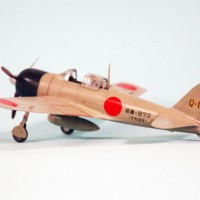
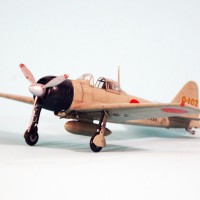
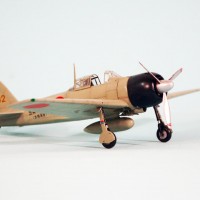

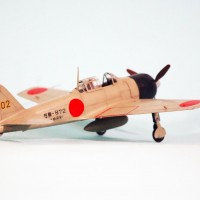
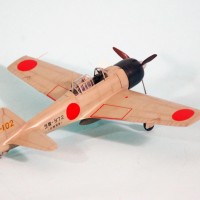


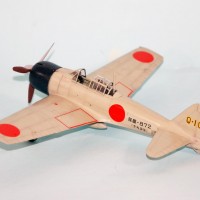
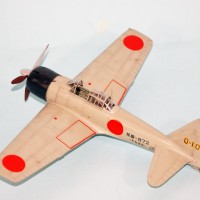

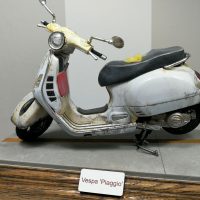
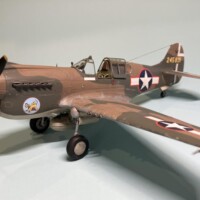
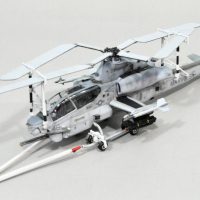
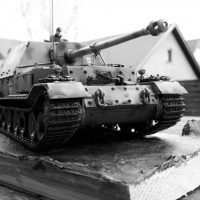
This is a real beauty, Tom. I like your take on the finish. Your Hamp certainly looks good with it. Thanks for the background detail too.
I'm sure there's a market for 'round tuits' amongst the modelling fraternity. I know I could use one!
I own three Round Tuits and still fall behind.
Tom, you hit the nail with this one, Hasegawa quarter scale Zeros are a good deal when it comes to what you get for your money, at least here in Europe you can find them at reasonable prices (around 20ish euros), and with minimal prep work any average skill chap can build one that looks a genuine Zero. I have a model 11/21 on the side bench that I might finish later on, hope it goes and nice as your model 32 here
Nice work, TC...("round toit" - I like that)
Another great read and build!
nice scheme
These Hasegawa Zeros are my favorites. They are just like the 109's that Hasegawa manufactured around the same time. Both are good kits, even to this day even if they're from the 90's.
I like how you have built the plane, and enjoyed reading the article. I saw it yesterday on Modeling Madness, so I thought it might show up here today. Well done.
You are correct about the shiny finish on the early A6M's. They were shiny, and this luster can still be seen on some relic parts.
This is not a complaint about your build, merely an observation. I am not the color Police. You can paint it any color you want, it's yours. You could even paint it purple, but then it might get mistaken for a "Rufe"... Just kidding with you. (The red oxide primer used on these planes was not purple).
I think your A6M is a little too light, although this could be the lighting when you took the pictures. Yours looks more like it would have after it has been in service for a while, as Ame-Iro would fade. As far as a Midnight Blue color in the US Navy, that's a new one for me. I've heard of Dark Sea Blue and Non Specular Sea Blue before. This is a very good match for the "Blue Black" color that was used on the cowlings, and under the fixed rear windows. The closest US equivalent is FS 24042.
Back in April I wrote an article on the colors that were used on these Zero's. The article is based on the recent research findings and color comparisons done by Nick Millman, Jim Lansdale, and many others. Here's a link to it.
This is going to be a multipart series, but this is as far as I got with it so far. There will be more to follow.
There are lots of good pictures there and links to other resources should you decide to build another A6M.
The history you wrote about is always a good read. Kudos for getting the wheel wells correct...
"liked"
Louis:
You're rigfht about the lighting affecting the look of the model - it's a shade or two darker in person. My model in person looks pretty much like your lead photo. You're right about the glossy finish of relics - Lansdale made many mentions of taking a really weathered part and cleaning it up and finding a polished color quite different from the weathered look. And that the parts still came up glossy, which proves the point about the paint.
Great work on your part with that article. Please finish with the rest! You're an excellent researcher (take that as a compliment, many people who claim to be "great researchers" aren't).
Keep up your great work!
Thank you Tom... It's amazing at just how much of an effect lighting can have when you're taking pictures.
I appreciate this compliment. I'll continue on this endeavor as time permits. Looking forward to seeing your next build.
Lighting is EVERYTHING when you're taking picgtures. It's why they call the hour after sunrise and the hour before sunset "Magic Hour."
Excellent work!
Thanks for the great background info on the aircraft and the Ameiro paint in particular.
Hi Tom,
I do like Zero with overall grey camouflage. One of my next projects. Your rendition will be a nice inspiration. Bravo!
Great work. I think close to capturing 'state of the art' interpretation of the Zero's finish. One correction: you wrote " If you want a Zero other than the A6M3 Model 21..." of which 'there aint no', and, after following your work for years, please get a new camera!
Editorial change made, thank you.
Please send $900 by wire transfer to buy a new camera.
I found out something quite interesting about the A6M3 series. The Hamp (Clipped wing version) was the least popular variant and had the shortest range of any Zero. More A6M3s with standard wingtips and folds were made than the clipped version.
The long and short of it was that the Pilots had asked for an uprated engine and a better roll rate and the "Hamp" was the result. UNFORTUNATELY...this came at a cost: The reduced wing area meant higher wing-loading and the increased engine power meant shorter range via heavier fuel consumption. New polite complaints (They were Japanese after all) went back and Mitsubishi set about addressing them. Wing tanks and an increased fuselage tank restored range, the folding wingtip were retored and the New Sakae engine (Earmarked for the A6M-5) was added to boost power. And they added a larger drop tank point. To distinguish it from the Model 32 it was re-numbered to the Model 22 (To directly associate it with the Model 21 A6M-2. More model 22s were made than Model 32 - 1400 against about 650. Because they entered service very soon before the A6M-5 and most were camouflaged with green, they are often mistaken for A6M-5s when wrecks are found. (Externally they are almost identical to early A6M-5s.)
This is some excellent information. Thanks for sharing it with us...
Thanks to Hasegawa- that is all in the history of their A6M-3 type 22 kit in 1/48.
Kit (my example) JT-110, (also available in other boxings). BTW, the increased fuel capacity meant that the Model 22 had the longest range of any model of Zero!
The Model 22 also had plumbing for wing droptanks, though I have never seen a photo of one carrying them.
the Model 22 came out of the factory in ameiro. The camouflage you see on them is "field applied". The late production ones just before the A6M5 may have come out of the factory in camo, since camo was ordered for the factory in March/April 1943.
All A6M3s were Mitsubishi-built. Nakajima delivered A6M2s until early 1943, then started delivering A6M5s in the summer.
a good research work and a great model
REGARDS
Great job, Tom. Even though the Pacific climate was rough on aircraft paint, you have to assume that the paint was new at some point. It is really nice to see a Zero in a pristine paint.
Very nice! I still need to do an A6M in this scheme.